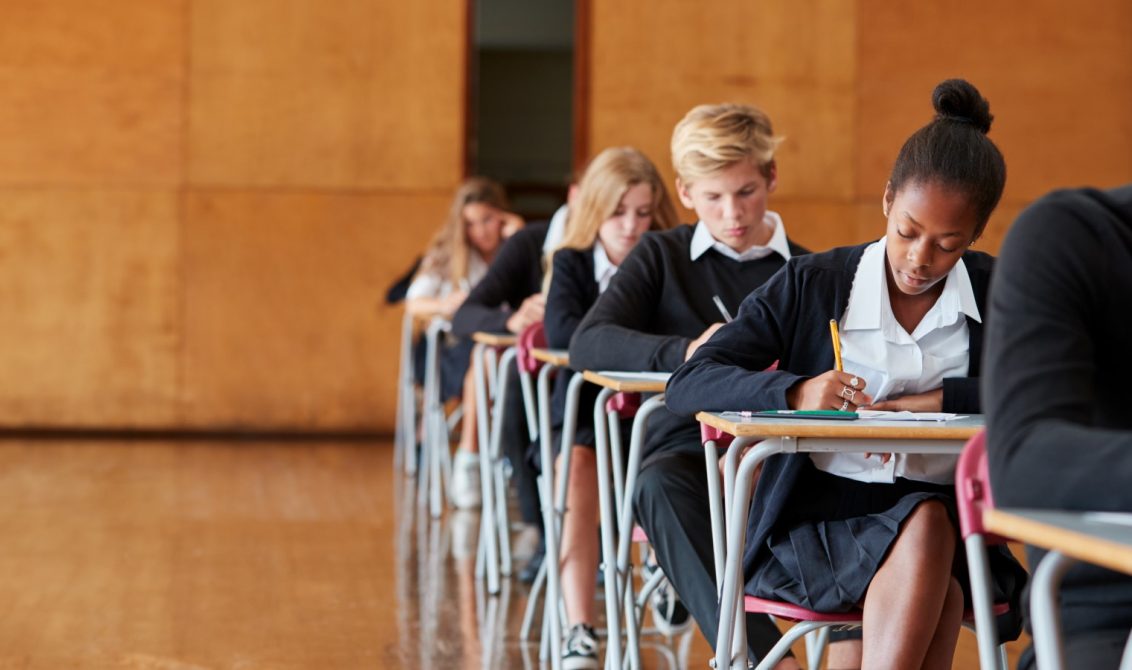
Mindfulness is a powerful tool that can empower students to deal with exam-related stress and anxiety. It helps them decenter from difficult emotions, feel calmer, and see the exam as a less threatening experience.
To delve deeper into the concept of mindfulness, we spoke with Amy Malloy, accredited meditation trainer and an advocate of mindfulness in education. Find out how students can use mindfulness to combat pre-exam anxiety and how teachers can help them master the art of being in the moment.
What is mindfulness? Dispelling the myth
In the past few years, mindfulness has become a buzzword that you often see on social media or on the covers of wellness magazines. However, behind the hype is an ancient practice that has been around for thousands of years that is actually very simple.
“Forget the poses, the sunsets, the mountain tops – all of which are lovely, of course,” Amy says, “Because really, all you need to do is focus your attention on something which anchors you in the present moment.”
Mindfulness is the skill of paying conscious attention to and becoming aware of the present moment, often using the breath and meditation. It teaches us the ability to accept and sit with difficult feelings in the same way that we can with happy ones. It helps us see with a bit of perspective, without judgement and with kindness to ourselves.
“While meditation does have its roots in more spiritual practices, it is also a scientifically supported reality that breathing and focusing mindfully actively reduces stress,” Amy says.
Studies have proven that practising mindfulness is essentially training the brain to be calmer and more resilient. Anyone who has to face high-stress situations, such as students preparing for exams, can benefit from it. It can be tremendously helpful for teenagers, whose brains are going through radical changes and making it very difficult for them to deal with emotional situations – like exams – objectively.
But what causes exam anxiety? Amy explains what happens in our brains when we get nervous and why.
What does a lion and an English test have in common?
Most of the anxiety that we experience today is not just a product of the stressful modern world. It can be traced back to our ancestors whose survival depended on the ability to escape a predator. To raise the odds of survival, our brains evolved to switch into fight-or-flight mode as a response to danger – whether that danger was real or imagined.
“Fast-forward to the modern day and we find that emotional challenges (which are essentially imagined dangers) also activate our fight-or-flight system in the same way. The threat of an exam – being judged on our ability, the consequences of not achieving the desired result – sends us into fight-or-flight mode too. Essentially, we believe we are being faced with a lion – not just an English test.” Amy says.
When the fight-or-flight switch is flipped on, it triggers a hormonal response – the release of cortisol and adrenaline – and the planning and analysis functions of the brain are bypassed to allow our body to act involuntarily.
Using mindfulness, this state of stress can be managed – and it can even help us perform.
Calming the nerves before an exam
“When we are in fight-or-flight mode, our body increases our heart rate, sharpens our eyesight and our hearing and shuts down most other things. So anything learners can do to remind the brain that the exam isn’t a threat is really helpful,” Amy says.
However, it doesn’t hurt to hang on to a bit of that fight-or-flight edge.
“It’s about finding that sweet spot where the mind is clear and sharp thanks to a bit of adrenaline, but not too stressed so that everything shuts down and we can’t think,” she continues.
But what can students do to achieve this?
“The very act of breathing slowly actively deactivates fight or flight (our sympathetic nervous system) and activates our parasympathetic nervous system, otherwise known as ‘rest and digest’ mode. So simply taking a few moments to close the eyes and focus on the breath going in through the nose and out again can be very powerful,” she says.
“If the heart is really racing, then try purposefully slowing the breath down through counting, making the exhale a little longer than the inhale. For example, breathe in for a count of 4, breathe out for 4; breathe in for 4, breathe out for 6; breathe in for 4, breathe out for 8 etc,” says Amy.
Teachers can also help students experience exams with mindfulness. Amy recommends taking two approaches to reduce exam stress. The first one is related to the circumstances of the exam itself and helping students see it as a less threatening event.
“Try normalising the conditions around the exam, maybe using the same room for all assessment so it isn’t the first time they experience it,” she says.
The second one is a more long-term strategy.
“You can start regularly and actively training your students’ minds to cope with stressful situations more healthily, to encourage the brain to access a different network of the brain,” she says.
Here’s how to go about it.
Practising meditation in the classroom
Amy’s tip for teachers is to incorporate meditation into their lessons. She recommends trying the following process at the beginning of each lesson over the course of a few weeks:
-
Close your eyes or stare at your desk without focusing on anything.
-
Take a few deep breaths in through the nose and sigh it out through the mouth. Notice
-
what happens to your muscles as you do this.
-
Observe the weight of your body against the chair. Notice what the contact feels like.
-
Observe the sounds around you in the room. Allow them to come and go without labelling them.
-
Observe your breath going in at the nose and out again through the nose. Count ten breaths in and out, noticing and watching each breath, one at a time.
-
Take a few deep breaths, grow aware of your contact with the chair again.
-
Open your eyes and notice how you feel.
This should help lower students’ stress levels and increase concentration. After a couple of weeks of this practice, see if the students feel any different. Regular and consistent practice is what allows us to reap the benefits of mindfulness.
Amy recommends trying to encourage students to practice every day at home as well.
“There are a multitude of guided meditations freely available online with which to practice at home,” she says. “Another lovely practice is to encourage students to notice positive events in their day. Often when we are stressed, we can find ourselves focusing and ruminating purely on the sources of our stress. This means we can miss more pleasant things occurring right under our noses. Invite your students to try noting down three pleasant events from their day before they go to bed and see how they feel after a couple of weeks,” she adds.
Just as mindfulness can help with reducing exam stress, it can also aid students in accepting and dealing with the feeling of failure after a bungled exam.
“One of the wonderful benefits of mindfulness practice is the development of an inner resilience. When we learn to focus the attention consciously on an anchor (such as the body or our breath), the present takes on an objective quality, as if watching it on a screen,” she says.
This decentering allows us to choose how to respond to events, be they negative or positive. Our thoughts and feelings come and go, and they do not define us – nor do failed exams.

